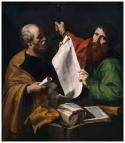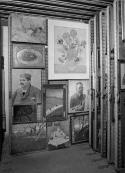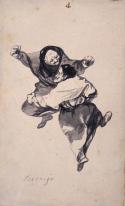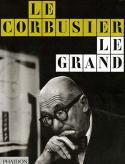Art Of The Day Weekly
#377 - from 26 February 2015 to 4 March 2015
IN THE AIR
Morandi, the man who reinvented still lifes
ROME – He was a painter, a total painter, who throughout his life tried to stay away from the upheavals in the world by staying in his little workshop in Bologna. He did not always succeed: he was put in jail briefly in May 1943, suspected of being an active member of the Resistance, and after the war he was constantly invited to join jurys and other mundane activities, though he systematically rejected that type of honors. Nevertheless, Giorgio Morandi (1890-1964) left a unique mark in XXth century painting as can be seen in the prices for his still lifes with bottles, now become quasi icons, something like contemporary "bodegones". This retrospective follows other major exhibitions, and in particular the posthumous one in 1973, mounted by critic Cesare Brandi and does not ignore his first years, with surprising Cubist compositions, nor his landscapes nor his etchings that are even less known. We also learn that this rare painter knew how to cultivate solid friendships: aside from Brandi, he was very close to art historian Roberto Longhi as can be seen in the section dedicated to the letters exchanged with the "inventor" of Caravaggio.
• Morandi at the Vittoriano, from 28 February to 21 June 2015.
EXHIBITIONS
The Stedelijk in war
AMSTERDAM – The Netherlands, like France, suffered immensely from the German invasion. The Netherlands also had exceptional art collections that were robbed by the Nazis. As the origins of certain works hanging in the museums seems doubtful a recent investigation was carried out on plundered goods. A few examples are looked into in detail in this exhibition that focuses on the case of the Stedelijk Museum, an emblem of a certain form of resistance during the occupation. While it was constrained to organize retrospectives oriented by the Nazis, the institution tried to preserve a certain space of freedom by presenting artists who were not glorified by the regime. Its director, Willem Sandberg, was an ace in typographic design and thus falsified identification documents for opponents while building a bunker in the dunes to hide the museum’s collection. As of April 1943 he too had to go into hiding, but returned after the Liberation with an unforgettable exhibition inaugurated by Piet Mondrian’s famous Victory Boogie Woogie.
• The Stedelijk Museum & The Second World War, at the Stedelijk Museum, from 27 February to 31 May 2015.
Goya brings back witches
LONDON – The Courtauld gallery offers the spectator a very original exhibition, a true witches' Sabbath. They dance, make faces, jump around and complain throughout twenty-two episodes. They are all created by the same matrix, the spirit of a black genius, Goya (1746-1828). A the age of 50 he had become deaf and started sketching on secret albums all that was inspired to him by the night creatures and the world of darkness. When he died, these eight albums - put in order from A to H, were dismembered adn scatterd without pity, finding refuge in museums and collections throught the world. For the first time one of the albums, the one with the letter D, aka Witches and Old Women, has been totally reassembled thanks to loans from Paris, Berlin, New York and Los Angeles. This type of black mass is not going to come around again.
• Goya, the Witches and Old Women Album at the Courtauld Gallery, from 26 February to 25 May 2015.
The Télémaque years
PARIS – Hervé Télémaque, born in 1937, was the top representative of Narrative Figuration. A current large retrospective at the Centre Pompidou raises him to the status of major artist of the end of the XXth century. It follows and completes those at the Fondation Electricité de France and the IVAM in Valence, and spans over his whole career with 75 works: his origins in Haiti, his brief passage in New York (1959-60), his constant back and forth between paintings, collage, monumental frescoes and sculpture. His participation to the exhibition “Mythologies quotidiennes” at the Musée d’Art moderne de la Ville de Paris in 1964 identified him as the recycler of symbols of our contemporary civilisation, as did the Pop artists. But he was also carried by other sources of inspiration. We see in his works references to "Négritude" or the great artists of the past, from Poussin and Magritte to Arshile Gorky.
• Hervé Télémaque at the Centre Pompidou, from 25 February to 18 May 2015.

Jusepe de Ribera, St Peter and St Paul, c. 1616, oil on canvas, 126 x 112 cm, Strasbourg, musée des Beaux-Arts © Photo : Musées de Strasbourg, Mathieu Bertola
News about Ribera when young
STRASBOURG - In 1606, a young prodigal Spanish, fifteen year-old boy, Ribera, appeared in Rome, just at the time when the most steamy artist of the moment, Caravaggio, fled the city in precipitation, leaving a deep mark. Those young years of Ribera were not as well known as his triumph in Naples, where he settled at the age of twenty five. Recent research has allowed though to determine he is the author of certain works attributed until now to the mysterious Master of Salomon's Judgement. The exhibition shows in detail these research works by presenting purchases by the Louvre between 2012-2013 (Saint John the Evangelist) and works from the museum of Fine Arts of Rennes (Saint Jude Thaddée), regarding an apostolado cycle, or half-body figures of apostles.
• Ribera à Rome, autour du premier Apostolado at the musée des Beaux-Arts, from 28 February to 31 May 2015.
AUCTIONS
The Sultan's cup
PARIS – This young auction house held its first sale in May 2014, and is held by two thirty year olds -Lucie Eléonore Riveron and Cédric Melado former specialists Piasa and Tajan. Their aim is to refresh the image of auction houses by holding sales in the evening –at 7 p.m. -, placing a wine bar right next door, and presenting exhibitions in a manicured manner for three weeks, quite a change from the regulatory day and a half at Drouot. Their themes are rather widely spanned and this sale is no exception, with paintings from the Greek school, furniture from the XXth century avant garde, polychrome Christs and even pompous Parisian XIXth century “art pompier“. One piece object sticks out of the lot: the bowl of Osman III (1754-1757). While Diogenes had thrown his cup away when he saw a young boy quench his thirst by simply using his hands, the Sultan had no intention of doing the same. And he never did. No wonder: it was made in Vincennes porcelain, with a refined floral decoration on a celestial blue background and gold chiseled lines. It was offered to banker Michel Zarifi, to thank him for his support, by another Sultan, Abdulhamid II, who would go down in history as the perpetrator of the first massacres of Armenians in 1894-96, the dress rehearsal of the genocide that will soon be commemorated a century later.
• Quelles histoires, 2 March 2015 at FauveParis.
BOOKS
Le Corbusier, an assessment
At the end of August 1965, a man drowned off the beach of Roquebrune. He was none less than Le Corbusier, one of the most influential and controversial architects of the century. Born in 1887, he worked at the Behrens firm, was associated to his cousin Jeanneret, and worked at La Chaux-de-Fonds, his native town, then in Paris where he built apartments and villas and the pavilion of the Esprit nouveau at the World Expo in 1925 before becoming a world figure after World War II. He built the habitat unit in Marseille as well as in Berlin, the Phillips pavilion at Expo 58 in Brussels, government buildings in Pendjab at Chandigarh. Throughout his life he doubled his building activity with a theoretical side (the Charter of Athens, the Modulor), as well as with important written works (letters and diaries) and drawings. This large volume explores a real continent, in depth, through a very rich iconography (that requires very good eyesight).
• Le Corbusier le Grand, by Jean-Louis Cohen, Phaidon, 848 p., €45.
OPENINGS OF THE WEEK

Miniartextil
27 February 2015 - MONTROUGE - Le Beffroi
A collective exhibition on contemporary textile art





